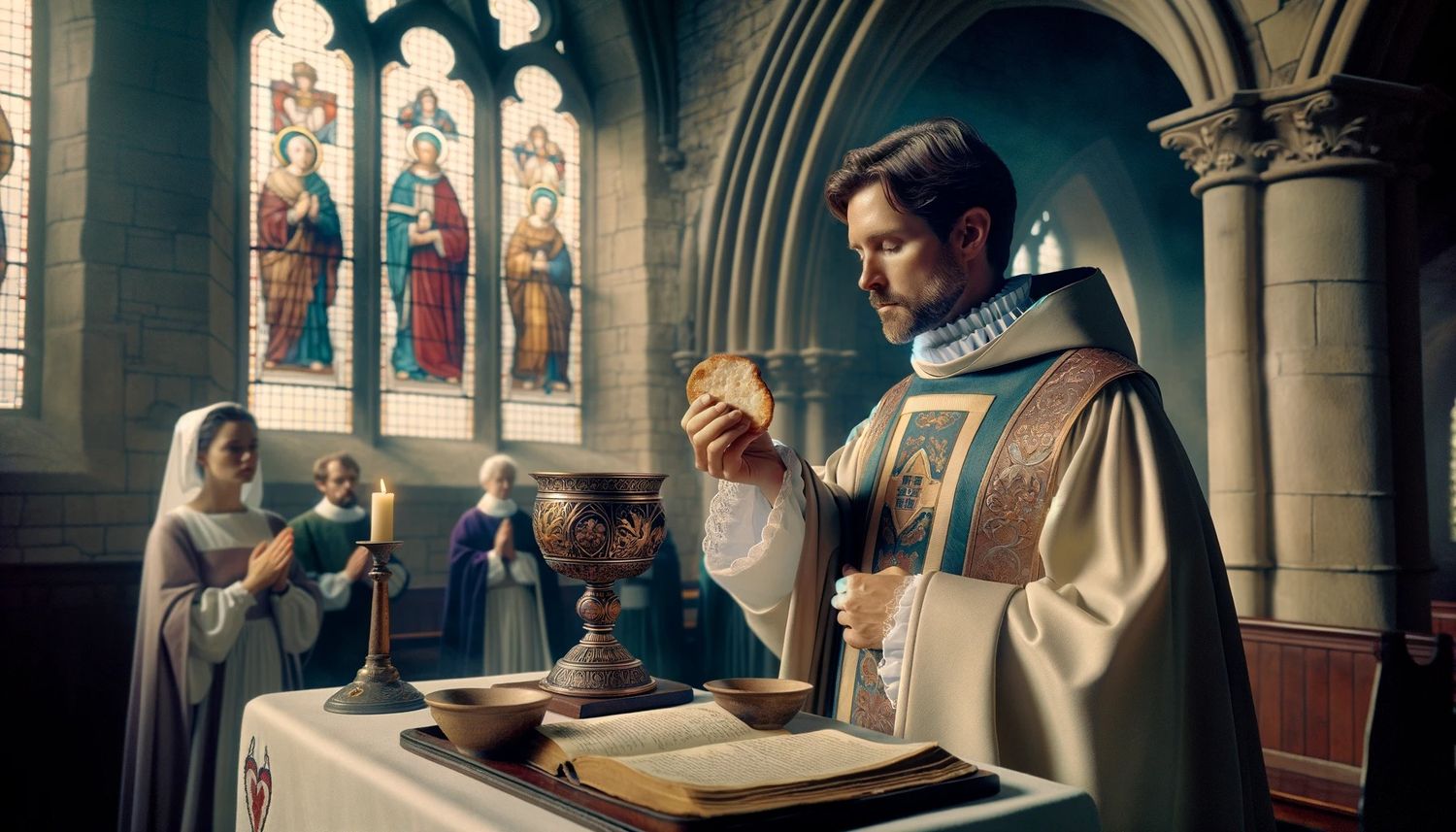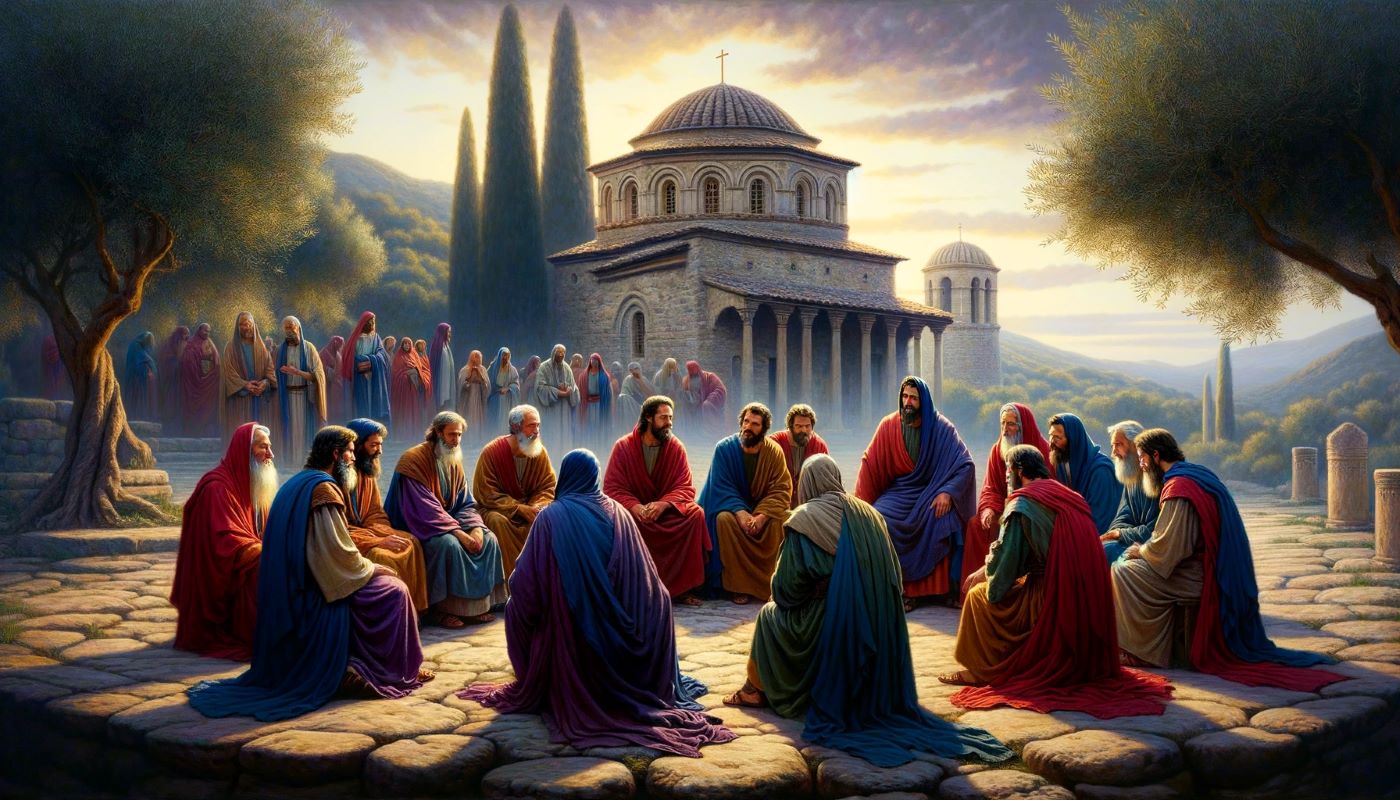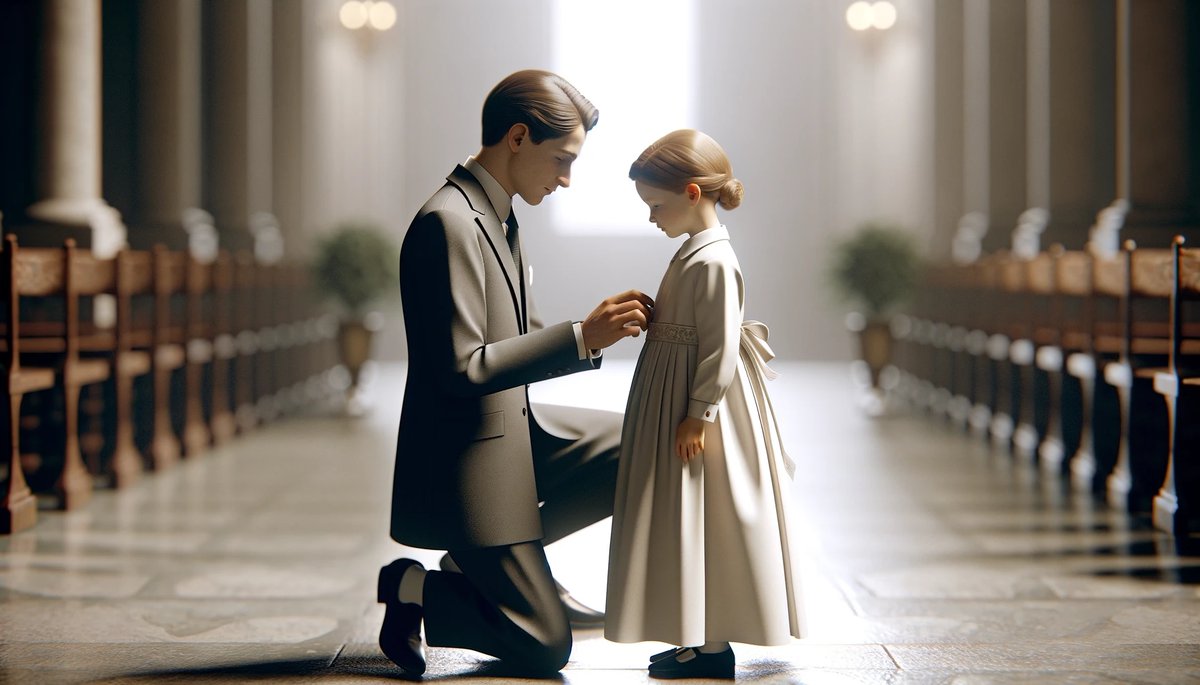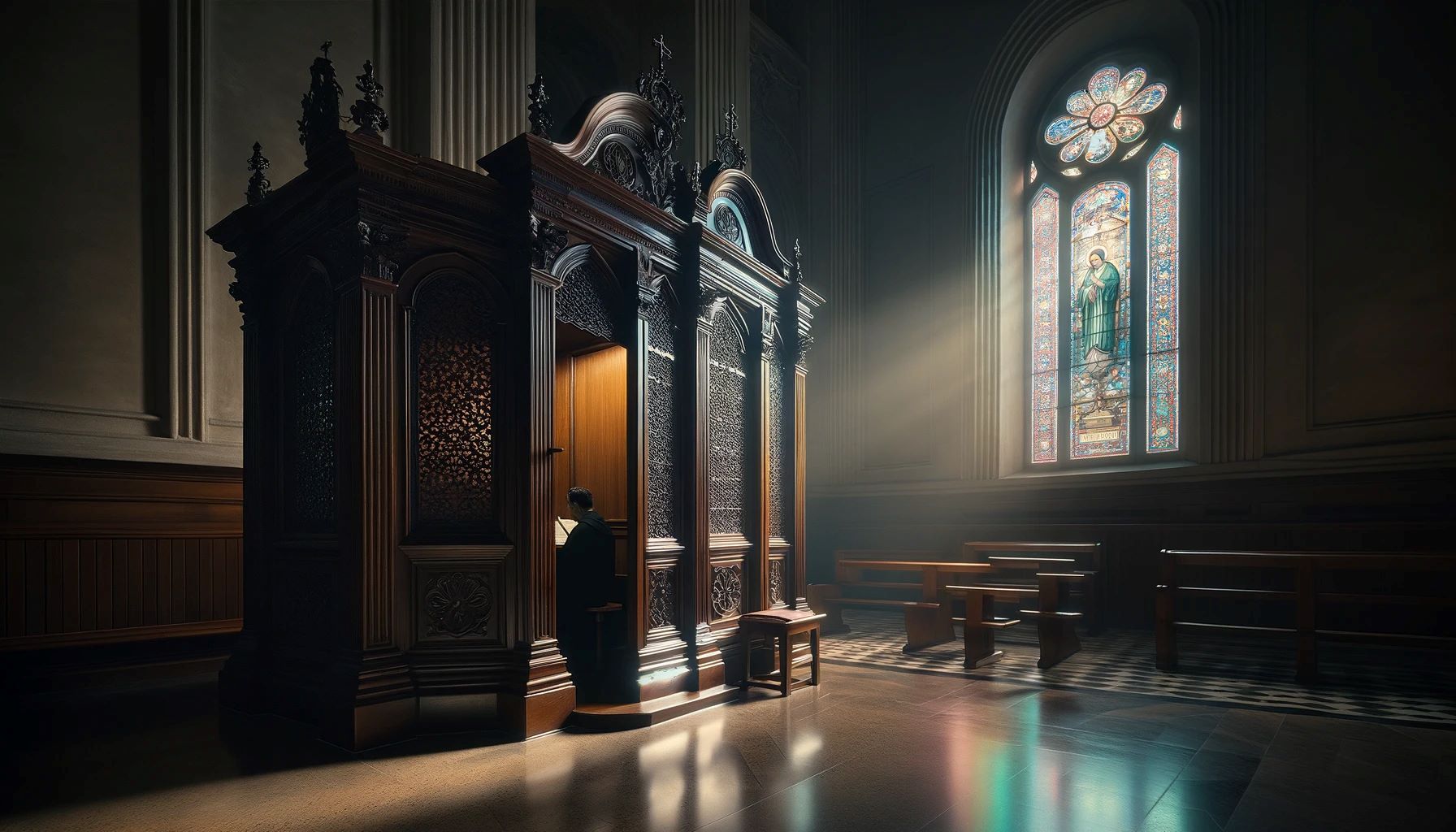Home>Theology and Spirituality>Why Do Lutheran Pastors Wear Robes


Theology and Spirituality
Why Do Lutheran Pastors Wear Robes
Published: March 3, 2024
Peter Smith, Editorial Director at Christian.net, combines deep insights into faith, politics, and culture to lead content creation that resonates widely. Awarded for his contributions to religious discourse, he previously headed a major organization for religious communicators, enhancing dialogue on faith's societal impacts.
Discover the significance of Lutheran pastors wearing robes and the theological and spiritual reasons behind this tradition. Explore the rich history and symbolism in theology and spirituality.
(Many of the links in this article redirect to a specific reviewed product. Your purchase of these products through affiliate links helps to generate commission for Christian.net, at no extra cost. Learn more)
Table of Contents
Introduction
Why do Lutheran pastors wear robes? This question may have crossed your mind if you've ever attended a Lutheran church service or observed one from a distance. The attire of religious leaders often carries deep significance, and the robes worn by Lutheran pastors are no exception. In this article, we will explore the historical, symbolic, and practical reasons behind the tradition of wearing robes in Lutheran worship. Additionally, we will delve into the controversies and debates that have surrounded the use of robes in Lutheran churches. By the end, you will have a comprehensive understanding of the role and significance of robes in the Lutheran tradition.
Read more: Why Do Lutheran Pastors Get To Marry
Historical Significance of Robes in Lutheran Tradition
-
Roots in Early Christian Practices: The use of robes in Lutheran tradition can be traced back to the early Christian church. During the early centuries of Christianity, clergy members, including pastors, wore distinctive garments while leading worship services. These garments were not only practical but also held symbolic significance, distinguishing the clergy from the congregation and signifying their role as spiritual leaders.
-
Influence of Reformation: The Protestant Reformation, led by Martin Luther in the 16th century, brought about significant changes in the practices of the Christian church. However, the use of robes in worship services remained a part of Lutheran tradition. Luther and other reformers sought to retain certain elements of liturgical worship, including the attire worn by clergy, while reforming theological doctrines and ecclesiastical structures.
-
Continuation of Liturgical Heritage: The Lutheran tradition has a strong connection to liturgical worship, which emphasizes the use of prescribed rituals and symbols in religious services. The historical significance of robes in Lutheran tradition is intertwined with this emphasis on liturgy, as the attire of pastors contributes to the visual and symbolic elements of worship.
-
Cultural and Regional Influences: Over time, the specific styles and designs of robes worn by Lutheran pastors have been influenced by cultural and regional factors. Different Lutheran denominations and congregations may have variations in the types of robes worn, reflecting the diverse historical and cultural contexts in which these traditions developed.
-
Preservation of Tradition: For many Lutheran communities, the use of robes by pastors represents a connection to the historical and theological heritage of the church. The continuity of this practice serves as a visible link to the early Christian and Reformation eras, reinforcing a sense of tradition and continuity within the faith community.
Understanding the historical significance of robes in Lutheran tradition provides insight into the enduring legacy of this practice within the context of religious history and cultural evolution.
Symbolism and Meaning of Robes in Lutheran Worship
-
Distinctive Identity: The robes worn by Lutheran pastors symbolize their distinct role within the worship setting. The attire sets the clergy apart from the congregation, visually signifying their position as spiritual leaders and representatives of the church.
-
Authority and Reverence: The robes carry a symbolic weight, representing the authority and reverence attributed to the pastoral office. When pastors don their robes, it serves as a visible reminder of the sacred responsibilities they bear in leading the congregation and administering the sacraments.
-
Historical Continuity: The symbolism of robes in Lutheran worship extends to the preservation of historical continuity. By wearing robes that have been part of the tradition for centuries, pastors connect themselves and the present-day congregation to the enduring legacy of the Lutheran faith and its rich history.
-
Liturgical Symbolism: Within the context of liturgical worship, the robes worn by pastors contribute to the symbolic tapestry of the worship experience. The colors, designs, and adornments of the robes often align with the liturgical calendar, reflecting the themes and seasons of the church year.
-
Humility and Service: While robes signify authority, they also convey a message of humility and service. By donning the robe, the pastor exemplifies a willingness to serve the congregation and fulfill their pastoral duties with a sense of humility and dedication.
-
Visual Representation of Ministry: The robes worn by Lutheran pastors serve as a visual representation of their ministry. They embody the spiritual and pastoral care provided by the clergy, creating a tangible link between the congregation and the spiritual guidance offered by the pastors.
Understanding the symbolism and meaning of robes in Lutheran worship illuminates the profound significance of this tradition within the context of religious symbolism and spiritual leadership.
Practical Reasons for Wearing Robes in Lutheran Services
-
Liturgical Functionality: The robes worn by Lutheran pastors serve practical purposes within the context of worship services. These garments are designed to facilitate the smooth conduct of liturgical rituals and sacraments, providing ease of movement and functionality as pastors lead the congregation in various elements of worship.
-
Professional Attire: The robes worn by pastors convey a sense of professionalism and formality, aligning with the solemnity and reverence of the worship setting. This professional attire underscores the significance of the pastoral role and contributes to the overall decorum of Lutheran worship services.
-
Uniformity and Equality: The use of robes in Lutheran services promotes a sense of uniformity and equality among the clergy, as all pastors don the same or similar attire during worship. This uniformity reinforces the collective identity of the clergy and emphasizes their shared commitment to serving the congregation.
-
Practicality in Sacramental Administration: When administering sacraments such as baptism or the Eucharist, the robes worn by pastors provide a practical means of maintaining decorum and reverence. The attire worn by clergy members during these sacred moments contributes to the solemnity and dignity of the sacramental rites.
-
Cultural and Climate Considerations: In some regions, the robes worn by Lutheran pastors may also serve practical functions related to climate and cultural norms. For example, in colder climates, the robes offer warmth and insulation, while in certain cultural contexts, specific styles of robes may hold cultural significance and relevance.
-
Recognition and Visibility: The distinctive attire of Lutheran pastors, including their robes, enhances recognition and visibility within the congregation. When pastors are robed, they are easily identifiable as spiritual leaders, fostering a sense of connection and accessibility for congregants seeking pastoral care and guidance.
-
Historical Continuity and Tradition: From a practical standpoint, the use of robes in Lutheran services contributes to the preservation of historical continuity and tradition. By maintaining this practice, Lutheran congregations uphold a tangible link to the historical roots of the faith and the enduring legacy of the church.
Understanding the practical reasons for wearing robes in Lutheran services sheds light on the functional and contextual aspects of this longstanding tradition within the Lutheran tradition.
Controversies and Debates Surrounding the Use of Robes in Lutheran Churches
-
Liturgical vs. Non-Liturgical Perspectives: One of the primary areas of contention surrounding the use of robes in Lutheran churches revolves around differing perspectives on liturgical practices. Some individuals and congregations advocate for a more traditional, liturgical approach, emphasizing the symbolic and historical significance of robes in worship. Conversely, others argue for a non-liturgical stance, seeking to minimize the emphasis on formal attire and ceremonial elements in favor of a more contemporary and casual worship environment.
-
Symbolism and Relevance: Debates often arise regarding the perceived symbolism and relevance of robes in modern Lutheran worship. While proponents of the tradition emphasize the deep symbolic meaning and historical continuity associated with robes, critics may question the contemporary relevance of this practice. Discussions center on whether the symbolism of robes effectively communicates to congregants in today's cultural context and whether alternative forms of attire could better convey the pastoral role.
-
Cultural and Contextual Adaptation: The adaptation of robe styles and designs to reflect cultural diversity and contemporary contexts has been a subject of debate within Lutheran churches. Some advocate for embracing cultural variations in robe attire to better resonate with diverse congregations, while others emphasize the importance of maintaining traditional forms of robes as a symbol of historical continuity and theological heritage.
-
Perceptions of Formality and Accessibility: Controversies surrounding the use of robes often intersect with perceptions of formality and accessibility in worship. Critics may argue that the formality associated with robes creates a barrier to approachability and inclusivity, potentially alienating individuals who seek a more relaxed and informal worship experience. Proponents, on the other hand, assert that the formality of robes upholds the reverence and sacredness of worship, underscoring the significance of the pastoral office.
-
Theological Implications: The theological implications of robe attire in Lutheran churches have sparked debates regarding the interpretation of scriptural teachings and the role of tradition in shaping worship practices. Discussions may center on whether the use of robes aligns with the core theological principles of the Lutheran faith and whether it enhances or detracts from the spiritual engagement of congregants.
-
Generational and Interdenominational Variances: Controversies surrounding robes in Lutheran churches often reflect generational and interdenominational variances in perspectives. Different generations and denominational affiliations within Lutheranism may hold contrasting views on the significance and appropriateness of robe attire, leading to ongoing debates and considerations of how to navigate these diverse perspectives within the broader Lutheran community.
-
Balancing Tradition and Innovation: The tension between preserving tradition and embracing innovation in worship practices is a recurring theme in discussions about robe attire. While some advocate for maintaining the longstanding tradition of wearing robes as a symbol of continuity, others propose innovative approaches to attire that align with contemporary sensibilities and cultural dynamics, prompting ongoing debates about striking a balance between tradition and innovation.
The controversies and debates surrounding the use of robes in Lutheran churches reflect the dynamic interplay of tradition, symbolism, cultural relevance, and theological considerations within the diverse tapestry of Lutheran worship practices.
Read more: How Do You Become A Lutheran Pastor
Conclusion
In conclusion, the tradition of Lutheran pastors wearing robes encompasses a rich tapestry of historical, symbolic, and practical significance within the context of worship. The historical roots of robe attire in early Christian practices and the enduring influence of the Protestant Reformation have contributed to the preservation of this tradition within Lutheran churches. The symbolism and meaning of robes in Lutheran worship extend to the representation of authority, historical continuity, and the visual embodiment of pastoral ministry. Additionally, the practical functions of robes in facilitating liturgical rituals, promoting uniformity, and enhancing recognition underscore the multifaceted role of attire in Lutheran services.
However, the controversies and debates surrounding the use of robes in Lutheran churches reflect the dynamic interplay of tradition, symbolism, cultural relevance, and theological considerations within the diverse tapestry of Lutheran worship practices. These discussions encompass varying perspectives on liturgical practices, the symbolism and relevance of robes, cultural adaptation, perceptions of formality and accessibility, theological implications, generational and interdenominational variances, and the balance between tradition and innovation.
Ultimately, the tradition of wearing robes by Lutheran pastors represents a nuanced intersection of history, symbolism, practicality, and theological discourse, embodying the complexities and depth of tradition within the Lutheran faith. Whether viewed through a lens of historical continuity, symbolic representation, or practical functionality, the tradition of robe attire in Lutheran worship continues to evoke contemplation, dialogue, and reverence within the diverse tapestry of Lutheran congregations.














